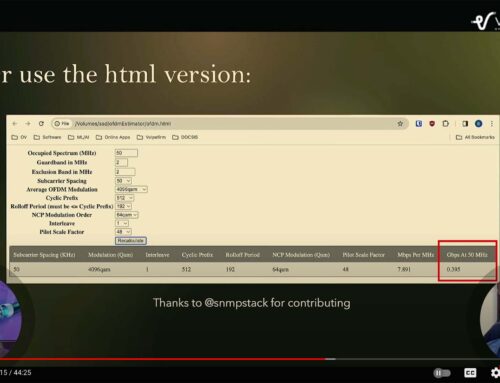Skip to content
Recommendations to resolving DOCSIS 3.1 cable modems crashing with OFDMA
Recommendations to resolving DOCSIS 3.1 cable modems crashing with OFDMA
- Place OFDMA channels above 42 MHz: For those fortunate with 5-65 MHz or 5-85 MHz return paths, keeping four 6.4 MHz SC-QAM signals below 42 MHz and then loading one OFDMA channel above 42 MHz is ideal. Your SC-QAM channels should be fully optimized with dynamic profile modulation up to 64-QAM. Then, by placing your OFDMA channel above 42 MHz, you’re ensuring its likely to be in a low noise environment. A bonus is that subscribers with in-home amplifiers will not run into partial-mode issues and your OFDMA channel may even be able to run up to 1024-QAM. For now, please keep your OFDMA channel far away from low frequency noise as shown in Figure 1.
- Place your OFDMA channel above 30 MHz: So, you don’t have an 85 MHz return. No problem, ATDMA SC-QAM carriers running a modified modulation profile using dynamic interleaving, long preambles and dynamic modulation profiles do amazingly well at lower frequencies with ingress and noise. If you didn’t understand most of the stuff I just said, that’s okay. There is a DOCSIS guy working at your company who does. The important thing is that now you can place your OFDMA channel above 30 MHz and take advantage of that blazing fast upstream speed [some] of your subscribers have been demanding.
- Tools: Tools such as proactive network maintenance (PNM) and profile management application (PMA) can be very helpful. These applications will give you insight into RxMER and can also help optimize upstream OFDMA profiles and downstream OFDM profiles resulting in increased data throughput.
- Deployment: Being on the cutting edge is great. There is value in the return that you see. However, sometimes being on the cutting edge has drawbacks too. I’m working with enough cable operators who are in a painful spot because they chose to be on the cutting edge. I know the vendors are working hard to fix the issues and will stabilize OFDMA very soon. Patience is a virtue.
Share This Story, Choose Your Platform!
Page load link




Leave a Reply